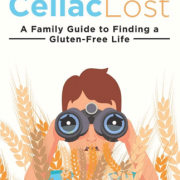Why are Women at Greater Risk for Celiac Disease?
 Research & clinical observations have consistently shown that women are more frequently diagnosed with this condition than men.
Research & clinical observations have consistently shown that women are more frequently diagnosed with this condition than men.
womenfitnessmag.com/women-are-at-a-greater-risk-for-celiac-disease 1
Celiac disease, an autoimmune disorder triggered by the ingestion of gluten, affects approximately 1% of the global population. However, research and clinical observations have consistently shown that women are more frequently diagnosed with this condition than men. This disparity raises important questions about the underlying reasons for the increased susceptibility among women.
This blog post delves into the multifaceted reasons behind this phenomenon, including genetic predispositions, hormonal influences, immune system differences, and societal factors, to offer a comprehensive understanding of why women are at a greater risk for celiac disease.
Genetic Predisposition and Hormonal Influences
The first piece of the puzzle in understanding why women are more prone lies in genetics and hormones. Celiac disease is known to run in families, suggesting a strong genetic component. Although the exact genetic mechanisms are complex and involve multiple genes, the HLA-DQ2 and HLA-DQ8 genes, which are more prevalent in women, play a significant role. These genetic markers are necessary, but not sufficient, for the development of celiac disease, indicating that other factors contribute to the disease’s manifestation.
Hormonal fluctuations are another critical factor that may influence the onset and severity of celiac disease. Estrogen and progesterone levels, which vary throughout a woman’s life, can affect immune system function. Some studies suggest that high levels of estrogen may enhance the immune response, potentially increasing the risk of autoimmune disorders, including celiac disease. This hormonal-immune system interaction could partly explain why women are more susceptible to developing celiac disease, especially during periods of significant hormonal changes such as puberty, pregnancy, and menopause.
Immune System Differences
The inherent differences between male and female immune systems also contribute to the higher incidence of autoimmune diseases in women, including celiac disease. Generally, women have a more robust immune response than men, which offers greater protection against infections. However, this heightened immune reactivity may also increase women’s risk for autoimmune conditions. The immune system’s overactivity in women can lead to a higher likelihood of developing an inappropriate response to gluten, leading to the autoimmune attack characteristic of celiac disease.
Societal and Behavioral Factors
Societal and behavioral factors also play a role in the increased diagnosis among women. Women are more likely to seek medical advice and undergo health screenings than men, potentially leading to a higher diagnosis rate of celiac disease in women. Additionally, societal norms and behaviors regarding diet and health might influence the prevalence of diagnosis. Women may be more attuned to their bodies and more likely to notice and report symptoms.
Dietary habits influenced by cultural and societal expectations might affect the exposure to gluten and the subsequent development of celiac disease. Although dietary practices vary widely and are not solely determined by gender, any patterns that lead to differences in gluten consumption could have implications for the risk of developing celiac disease.
Diagnosis and Treatment Challenges
The journey to a diagnosis can be fraught with challenges, and these challenges can be amplified for women due to the overlap of symptoms with other conditions commonly affecting women, such as irritable bowel syndrome (IBS), thyroid disease, and fibromyalgia. This overlap can lead to misdiagnosis or delays in receiving the correct diagnosis. Recognizing the specific manifestations in women, including the potential for reproductive and hormonal-related symptoms, is crucial for timely and accurate diagnosis.
Treatment involves adhering to a strict gluten-free diet, which can be particularly challenging due to gluten’s prevalence in many foods. The burden of managing the diet and the implications for social and family life can be significant. Support from healthcare providers, dietitians, and celiac disease support groups can be invaluable resources for women navigating the complexities.
The Path Forward
Understanding why women are at a greater risk for celiac disease requires a multifaceted approach, incorporating genetic, hormonal, immunological, and societal perspectives. Increased awareness and research into these factors can lead to better diagnostic tools, treatment options, and support mechanisms for women affected by celiac disease. Furthermore, recognizing the unique challenges women face in managing can foster a more supportive and effective healthcare environment.
As our knowledge of continues to evolve, it is imperative to focus on personalized medicine approaches that consider gender differences in the presentation and management. By doing so, we can ensure that all individuals receive the care and support they need to manage their condition effectively and maintain a high quality of life.
In conclusion, the higher risk of celiac disease among women is a complex issue influenced by genetic, hormonal, immunological, and societal factors. Through continued research and increased awareness, we can better understand these influences and work towards more effective strategies for prevention, diagnosis, and treatment, ultimately improving the lives of those affected by celiac disease.
1 womenfitnessmag.com/women-are-at-a-greater-risk-for-celiac-disease/













